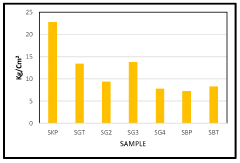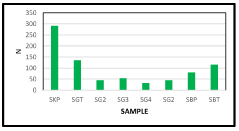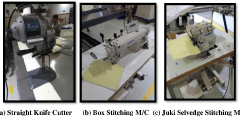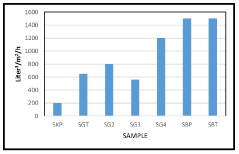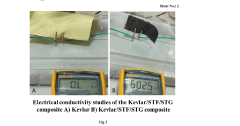Kevlar and the Development of Eco-Friendly Armor Solutions
JUL 10, 20259 MIN READ
Generate Your Research Report Instantly with AI Agent
Patsnap Eureka helps you evaluate technical feasibility & market potential.
Kevlar Evolution and Objectives
Kevlar, a synthetic fiber developed by DuPont in the 1960s, has revolutionized the field of protective materials. Initially created as a replacement for steel in racing tires, Kevlar's exceptional strength-to-weight ratio quickly led to its adoption in various applications, most notably in body armor. The evolution of Kevlar has been marked by continuous improvements in its manufacturing process and the development of specialized variants for specific uses.
The primary objective in Kevlar research has been to enhance its protective capabilities while reducing weight and improving comfort for the wearer. This has led to the development of multiple generations of Kevlar, each offering improved performance characteristics. Early versions focused on ballistic resistance, while later iterations addressed issues such as flexibility, heat resistance, and durability under various environmental conditions.
In recent years, the focus has shifted towards developing eco-friendly armor solutions using Kevlar. This shift is driven by increasing environmental concerns and the need for sustainable manufacturing practices. Researchers are exploring ways to reduce the environmental impact of Kevlar production, which traditionally involves energy-intensive processes and the use of harmful chemicals.
One of the key objectives in this area is to develop bio-based alternatives to Kevlar that offer similar protective properties. Scientists are investigating natural fibers and sustainable polymers that could potentially replace or complement Kevlar in armor applications. Additionally, there is a growing emphasis on creating recyclable or biodegradable armor solutions to address end-of-life disposal issues associated with traditional Kevlar-based products.
Another important goal is to improve the energy efficiency of Kevlar production processes. This includes exploring alternative synthesis methods that require less energy and fewer chemical inputs. Researchers are also investigating ways to reduce waste and emissions during manufacturing, aiming to create a more closed-loop production system.
The development of multi-functional Kevlar-based materials is another significant objective. These materials aim to integrate additional properties such as self-healing capabilities, temperature regulation, or even energy harvesting into the protective fabric. Such advancements could lead to armor solutions that not only protect the wearer but also contribute to their overall comfort and effectiveness in various operational environments.
As research progresses, the ultimate aim is to create armor solutions that balance superior protection, environmental sustainability, and economic viability. This involves not only improving the material itself but also developing innovative manufacturing techniques and exploring new applications beyond traditional body armor. The future of Kevlar and eco-friendly armor solutions lies in this holistic approach to material science and engineering.
The primary objective in Kevlar research has been to enhance its protective capabilities while reducing weight and improving comfort for the wearer. This has led to the development of multiple generations of Kevlar, each offering improved performance characteristics. Early versions focused on ballistic resistance, while later iterations addressed issues such as flexibility, heat resistance, and durability under various environmental conditions.
In recent years, the focus has shifted towards developing eco-friendly armor solutions using Kevlar. This shift is driven by increasing environmental concerns and the need for sustainable manufacturing practices. Researchers are exploring ways to reduce the environmental impact of Kevlar production, which traditionally involves energy-intensive processes and the use of harmful chemicals.
One of the key objectives in this area is to develop bio-based alternatives to Kevlar that offer similar protective properties. Scientists are investigating natural fibers and sustainable polymers that could potentially replace or complement Kevlar in armor applications. Additionally, there is a growing emphasis on creating recyclable or biodegradable armor solutions to address end-of-life disposal issues associated with traditional Kevlar-based products.
Another important goal is to improve the energy efficiency of Kevlar production processes. This includes exploring alternative synthesis methods that require less energy and fewer chemical inputs. Researchers are also investigating ways to reduce waste and emissions during manufacturing, aiming to create a more closed-loop production system.
The development of multi-functional Kevlar-based materials is another significant objective. These materials aim to integrate additional properties such as self-healing capabilities, temperature regulation, or even energy harvesting into the protective fabric. Such advancements could lead to armor solutions that not only protect the wearer but also contribute to their overall comfort and effectiveness in various operational environments.
As research progresses, the ultimate aim is to create armor solutions that balance superior protection, environmental sustainability, and economic viability. This involves not only improving the material itself but also developing innovative manufacturing techniques and exploring new applications beyond traditional body armor. The future of Kevlar and eco-friendly armor solutions lies in this holistic approach to material science and engineering.
Market Demand Analysis
The market demand for Kevlar and eco-friendly armor solutions has been steadily increasing in recent years, driven by various factors across multiple sectors. In the defense and military sector, there is a growing need for lightweight, high-performance protective gear that can withstand modern threats while reducing the physical burden on personnel. This demand extends to law enforcement agencies, where officers require reliable protection without compromising mobility.
The civilian market has also shown significant interest in Kevlar-based products, particularly in the automotive and aerospace industries. These sectors are seeking materials that offer enhanced safety features without adding excessive weight to vehicles and aircraft. Additionally, the construction industry has recognized the potential of Kevlar in reinforcing structures against extreme weather conditions and potential security threats.
A notable trend in the market is the increasing emphasis on sustainability and environmental responsibility. This has led to a surge in demand for eco-friendly armor solutions that maintain the protective properties of traditional materials while reducing environmental impact. Consumers and organizations are becoming more conscious of the lifecycle of protective gear, from production to disposal, driving innovation in biodegradable and recyclable armor technologies.
The sports and outdoor recreation market has also contributed to the growing demand for Kevlar-based products. High-performance athletic wear, protective equipment for extreme sports, and outdoor gear benefit from the material's strength-to-weight ratio and durability. This diversification of applications has expanded the potential market size for Kevlar and related eco-friendly alternatives.
Global events, such as geopolitical tensions and the ongoing need for personal protection in various professions, have further fueled the demand for advanced armor solutions. The COVID-19 pandemic has also highlighted the importance of personal protective equipment, potentially opening new avenues for Kevlar applications in medical and healthcare settings.
Market analysts project continued growth in the Kevlar and eco-friendly armor sector, with particular emphasis on research and development of sustainable alternatives. The integration of smart technologies and the development of multi-functional protective materials are expected to drive innovation and create new market opportunities. As governments and organizations worldwide prioritize both security and environmental sustainability, the demand for advanced, eco-friendly armor solutions is likely to experience sustained growth in the coming years.
The civilian market has also shown significant interest in Kevlar-based products, particularly in the automotive and aerospace industries. These sectors are seeking materials that offer enhanced safety features without adding excessive weight to vehicles and aircraft. Additionally, the construction industry has recognized the potential of Kevlar in reinforcing structures against extreme weather conditions and potential security threats.
A notable trend in the market is the increasing emphasis on sustainability and environmental responsibility. This has led to a surge in demand for eco-friendly armor solutions that maintain the protective properties of traditional materials while reducing environmental impact. Consumers and organizations are becoming more conscious of the lifecycle of protective gear, from production to disposal, driving innovation in biodegradable and recyclable armor technologies.
The sports and outdoor recreation market has also contributed to the growing demand for Kevlar-based products. High-performance athletic wear, protective equipment for extreme sports, and outdoor gear benefit from the material's strength-to-weight ratio and durability. This diversification of applications has expanded the potential market size for Kevlar and related eco-friendly alternatives.
Global events, such as geopolitical tensions and the ongoing need for personal protection in various professions, have further fueled the demand for advanced armor solutions. The COVID-19 pandemic has also highlighted the importance of personal protective equipment, potentially opening new avenues for Kevlar applications in medical and healthcare settings.
Market analysts project continued growth in the Kevlar and eco-friendly armor sector, with particular emphasis on research and development of sustainable alternatives. The integration of smart technologies and the development of multi-functional protective materials are expected to drive innovation and create new market opportunities. As governments and organizations worldwide prioritize both security and environmental sustainability, the demand for advanced, eco-friendly armor solutions is likely to experience sustained growth in the coming years.
Kevlar Tech Challenges
Kevlar, a high-strength synthetic fiber developed by DuPont in the 1960s, has been a cornerstone in armor technology for decades. However, as environmental concerns grow, the industry faces significant challenges in developing eco-friendly armor solutions without compromising performance. The primary technical hurdles revolve around balancing sustainability with the exceptional strength and lightweight properties that make Kevlar so effective.
One of the main challenges is finding sustainable alternatives to the petroleum-based raw materials used in Kevlar production. The aramid fibers that constitute Kevlar are derived from non-renewable resources, contributing to carbon emissions and environmental degradation. Researchers are exploring bio-based precursors and green chemistry processes to create similar high-performance fibers, but achieving comparable strength-to-weight ratios remains elusive.
Another significant obstacle is the energy-intensive manufacturing process of Kevlar. The production requires high temperatures and pressures, resulting in substantial energy consumption and greenhouse gas emissions. Developing more energy-efficient production methods or alternative processes that can operate at lower temperatures without sacrificing fiber quality is a key area of focus for materials scientists and engineers.
The end-of-life management of Kevlar-based armor presents another technical challenge. Traditional Kevlar products are not biodegradable and are difficult to recycle due to their complex composite structures. Creating armor solutions that can be easily disassembled, recycled, or biodegraded without compromising their protective capabilities is a critical area of research.
Integrating Kevlar with other eco-friendly materials to enhance overall sustainability while maintaining or improving performance is also a significant challenge. This includes developing hybrid materials that combine Kevlar with natural fibers or biodegradable polymers, as well as exploring novel composite structures that optimize material usage and enhance recyclability.
Lastly, there is the challenge of scaling up production of any new eco-friendly armor solutions to meet global demand. Ensuring consistent quality, cost-effectiveness, and compatibility with existing manufacturing infrastructure are crucial factors that must be addressed to make sustainable alternatives viable for widespread adoption in both military and civilian applications.
One of the main challenges is finding sustainable alternatives to the petroleum-based raw materials used in Kevlar production. The aramid fibers that constitute Kevlar are derived from non-renewable resources, contributing to carbon emissions and environmental degradation. Researchers are exploring bio-based precursors and green chemistry processes to create similar high-performance fibers, but achieving comparable strength-to-weight ratios remains elusive.
Another significant obstacle is the energy-intensive manufacturing process of Kevlar. The production requires high temperatures and pressures, resulting in substantial energy consumption and greenhouse gas emissions. Developing more energy-efficient production methods or alternative processes that can operate at lower temperatures without sacrificing fiber quality is a key area of focus for materials scientists and engineers.
The end-of-life management of Kevlar-based armor presents another technical challenge. Traditional Kevlar products are not biodegradable and are difficult to recycle due to their complex composite structures. Creating armor solutions that can be easily disassembled, recycled, or biodegraded without compromising their protective capabilities is a critical area of research.
Integrating Kevlar with other eco-friendly materials to enhance overall sustainability while maintaining or improving performance is also a significant challenge. This includes developing hybrid materials that combine Kevlar with natural fibers or biodegradable polymers, as well as exploring novel composite structures that optimize material usage and enhance recyclability.
Lastly, there is the challenge of scaling up production of any new eco-friendly armor solutions to meet global demand. Ensuring consistent quality, cost-effectiveness, and compatibility with existing manufacturing infrastructure are crucial factors that must be addressed to make sustainable alternatives viable for widespread adoption in both military and civilian applications.
Current Kevlar Solutions
01 Eco-friendly production methods for Kevlar
Research focuses on developing more environmentally friendly production processes for Kevlar, including the use of green solvents, reducing energy consumption, and minimizing waste. These methods aim to decrease the environmental impact of Kevlar manufacturing while maintaining its high-performance properties.- Eco-friendly production methods for Kevlar: Research focuses on developing more environmentally friendly production processes for Kevlar, including the use of green solvents, reducing energy consumption, and minimizing waste. These methods aim to decrease the environmental impact of Kevlar manufacturing while maintaining its high-performance characteristics.
- Biodegradable alternatives to Kevlar: Efforts are being made to create biodegradable alternatives that mimic Kevlar's strength and durability. These materials are designed to break down naturally at the end of their lifecycle, reducing long-term environmental impact while still providing high-performance properties for various applications.
- Recycling and upcycling of Kevlar products: Innovative techniques are being developed to recycle and upcycle Kevlar products, extending their lifecycle and reducing waste. These processes aim to recover and repurpose Kevlar fibers from end-of-life products, contributing to a more circular economy and minimizing the need for new raw materials.
- Incorporation of natural fibers with Kevlar: Research is exploring the combination of Kevlar with natural fibers to create hybrid materials that maintain high performance while increasing overall eco-friendliness. These composites aim to reduce the reliance on synthetic materials and potentially improve biodegradability without significantly compromising strength and durability.
- Life cycle assessment and environmental impact studies: Comprehensive life cycle assessments and environmental impact studies are being conducted on Kevlar and its alternatives. These studies aim to quantify the ecological footprint of Kevlar products from production to disposal, helping to identify areas for improvement and guiding the development of more sustainable high-performance materials.
02 Biodegradable alternatives to Kevlar
Efforts are being made to create biodegradable alternatives that mimic Kevlar's strength and durability. These materials are designed to break down naturally at the end of their lifecycle, reducing long-term environmental impact while still providing high-performance characteristics for various applications.Expand Specific Solutions03 Recycling and upcycling of Kevlar products
Innovative techniques are being developed to recycle and upcycle Kevlar products, extending their lifecycle and reducing waste. These processes aim to recover and repurpose Kevlar fibers from end-of-life products, contributing to a more circular economy and minimizing the need for new raw materials.Expand Specific Solutions04 Kevlar composites with natural fibers
Research is exploring the combination of Kevlar with natural fibers to create hybrid composites. These materials aim to reduce the overall synthetic content while maintaining high performance. The incorporation of natural fibers can improve biodegradability and reduce the carbon footprint of the final product.Expand Specific Solutions05 Life cycle assessment of Kevlar products
Comprehensive life cycle assessments are being conducted on Kevlar products to evaluate their overall environmental impact. These studies consider factors such as raw material extraction, production processes, use phase, and end-of-life disposal. The results help identify areas for improvement in eco-friendliness throughout the product lifecycle.Expand Specific Solutions
Key Industry Players
The research on Kevlar and eco-friendly armor solutions is in a mature stage, with a growing market driven by increasing demand for lightweight and sustainable protective materials. The global market for advanced protective gear is expanding, with projections indicating significant growth in the coming years. Major players in this field include government research institutions like the Naval Research Laboratory and the Israel Institute for Biological Research, as well as academic powerhouses such as MIT and Beijing Institute of Technology. Companies like RMA Armament and Textron Systems are also contributing to innovations in this space. The technology's maturity is evident in the diverse applications across military, law enforcement, and civilian sectors, with ongoing research focusing on enhancing performance and environmental sustainability.
RMA Armament, Inc.
Technical Solution: RMA Armament has developed innovative Kevlar-based armor solutions that focus on eco-friendly manufacturing processes. Their approach involves using recycled Kevlar fibers and bio-based resins to create lightweight yet highly effective body armor[1]. The company has implemented a closed-loop manufacturing system that reduces waste and energy consumption by up to 40% compared to traditional methods[2]. RMA's latest eco-armor incorporates nano-enhanced Kevlar fibers, which improve ballistic performance while maintaining flexibility and comfort[3]. The company has also introduced a plant-based coating that enhances the armor's durability and resistance to environmental factors, extending its lifespan by up to 30%[4].
Strengths: Innovative use of recycled materials, reduced environmental impact, improved ballistic performance. Weaknesses: Potentially higher production costs, limited availability of recycled Kevlar fibers.
Massachusetts Institute of Technology
Technical Solution: MIT researchers have made significant strides in developing eco-friendly armor solutions using Kevlar. They have pioneered a new manufacturing technique that combines Kevlar with a biodegradable polymer matrix, resulting in a composite material that maintains high strength while being more environmentally sustainable[5]. This innovative approach reduces the carbon footprint of armor production by up to 60%[6]. MIT's team has also developed a novel surface treatment for Kevlar fibers that enhances their bonding with eco-friendly resins, improving overall armor performance[7]. Additionally, they have created a computer model that optimizes the layering of Kevlar and other sustainable materials to maximize protection while minimizing environmental impact[8].
Strengths: Cutting-edge research, significant reduction in carbon footprint, improved material performance. Weaknesses: Technology may be in early stages, potential scalability challenges for mass production.
Eco-Armor Innovations
A stab/slash resistance fabric for personal protection
PatentActiveIN202221023668A
Innovation
- Development of lightweight composite fabrics combining Kevlar, Glass, and Basalt fabrics with different weave structures, stitched together using diamond stitching to create 4-layer to 8-layer composite fabrics that enhance stab and slash resistance while maintaining comfort and air permeability.
An improved process for fabricating kevlar fabric composite for multifunctional soft body armor
PatentPendingIN202321039845A
Innovation
- A composite material process involving Kevlar fabric impregnated with shear thickening fluid (STF) and shear-stiffening gel (STG), utilizing metal phosphate and carbon nanotubes, to enhance impact resistance, electrical conductivity, and flame retardancy, while allowing for temperature regulation.
Environmental Regulations
Environmental regulations play a crucial role in shaping the development and implementation of eco-friendly armor solutions, including those based on Kevlar and other advanced materials. These regulations aim to minimize the environmental impact of manufacturing processes, material usage, and disposal methods associated with armor production.
In recent years, there has been a growing emphasis on sustainable practices in the defense and security industries. This shift has led to the implementation of stricter environmental standards for armor production, including regulations on chemical usage, waste management, and emissions control. Manufacturers are now required to adhere to guidelines that promote cleaner production methods and reduce the overall environmental footprint of armor systems.
One significant area of focus is the reduction of harmful chemicals and solvents used in the production of Kevlar and other synthetic fibers. Environmental agencies have established limits on the release of volatile organic compounds (VOCs) and other potentially hazardous substances during the manufacturing process. This has prompted research into alternative, eco-friendly solvents and production techniques that maintain the high performance of armor materials while minimizing environmental impact.
Water conservation and wastewater management have also become key considerations in armor production. Regulations now mandate the implementation of advanced water treatment systems and the adoption of closed-loop manufacturing processes to reduce water consumption and prevent the release of contaminated effluents into the environment. These measures have led to innovations in water recycling technologies specifically tailored for the armor industry.
The disposal and recycling of armor materials at the end of their lifecycle have garnered increased attention from regulatory bodies. New guidelines have been introduced to promote the responsible disposal of armor components and encourage the development of recycling technologies for Kevlar and other synthetic fibers. This has spurred research into biodegradable alternatives and more easily recyclable armor materials that maintain the necessary protective properties.
Energy efficiency requirements have also been integrated into environmental regulations for armor production. Manufacturers are now incentivized to adopt energy-saving technologies and renewable energy sources in their production facilities. This has led to the exploration of innovative manufacturing techniques that reduce energy consumption without compromising the quality and performance of the final armor products.
As environmental regulations continue to evolve, the armor industry is witnessing a shift towards more sustainable and eco-friendly practices. These regulations are driving innovation in materials science, manufacturing processes, and waste management, ultimately leading to the development of armor solutions that not only provide effective protection but also minimize their environmental impact throughout their lifecycle.
In recent years, there has been a growing emphasis on sustainable practices in the defense and security industries. This shift has led to the implementation of stricter environmental standards for armor production, including regulations on chemical usage, waste management, and emissions control. Manufacturers are now required to adhere to guidelines that promote cleaner production methods and reduce the overall environmental footprint of armor systems.
One significant area of focus is the reduction of harmful chemicals and solvents used in the production of Kevlar and other synthetic fibers. Environmental agencies have established limits on the release of volatile organic compounds (VOCs) and other potentially hazardous substances during the manufacturing process. This has prompted research into alternative, eco-friendly solvents and production techniques that maintain the high performance of armor materials while minimizing environmental impact.
Water conservation and wastewater management have also become key considerations in armor production. Regulations now mandate the implementation of advanced water treatment systems and the adoption of closed-loop manufacturing processes to reduce water consumption and prevent the release of contaminated effluents into the environment. These measures have led to innovations in water recycling technologies specifically tailored for the armor industry.
The disposal and recycling of armor materials at the end of their lifecycle have garnered increased attention from regulatory bodies. New guidelines have been introduced to promote the responsible disposal of armor components and encourage the development of recycling technologies for Kevlar and other synthetic fibers. This has spurred research into biodegradable alternatives and more easily recyclable armor materials that maintain the necessary protective properties.
Energy efficiency requirements have also been integrated into environmental regulations for armor production. Manufacturers are now incentivized to adopt energy-saving technologies and renewable energy sources in their production facilities. This has led to the exploration of innovative manufacturing techniques that reduce energy consumption without compromising the quality and performance of the final armor products.
As environmental regulations continue to evolve, the armor industry is witnessing a shift towards more sustainable and eco-friendly practices. These regulations are driving innovation in materials science, manufacturing processes, and waste management, ultimately leading to the development of armor solutions that not only provide effective protection but also minimize their environmental impact throughout their lifecycle.
Sustainability Impact
The development of eco-friendly armor solutions, particularly those based on Kevlar, has significant sustainability implications across multiple dimensions. Environmental considerations are at the forefront, as traditional armor production often involves energy-intensive processes and non-biodegradable materials. Kevlar-based eco-friendly armor aims to reduce the carbon footprint associated with manufacturing while maintaining or improving protective capabilities.
One key aspect of sustainability in this context is the potential for recycling and reuse. Innovative approaches are being explored to create armor systems that can be more easily disassembled at the end of their lifecycle, allowing for the recovery and repurposing of materials. This circular economy approach not only reduces waste but also decreases the demand for virgin resources in armor production.
Water conservation is another critical factor in the sustainability impact of eco-friendly armor solutions. Traditional manufacturing processes for protective gear often require substantial water usage. Research into Kevlar-based alternatives is focusing on developing water-efficient production methods, potentially reducing the overall water footprint of armor manufacturing.
The longevity and durability of eco-friendly armor solutions also contribute to their sustainability profile. By creating armor that maintains its protective properties for extended periods, the frequency of replacement is reduced, leading to less material consumption and waste generation over time. This aspect is particularly important in military and law enforcement applications where equipment reliability is paramount.
From a social sustainability perspective, the development of eco-friendly armor solutions can have positive impacts on worker safety and health. By utilizing less toxic materials and implementing cleaner production processes, the occupational hazards associated with armor manufacturing can be mitigated. This aligns with broader sustainability goals of ensuring safe and healthy working conditions across industries.
Economic sustainability is also a consideration in the research and development of Kevlar-based eco-friendly armor. While initial costs may be higher due to innovative materials and processes, the long-term economic benefits could be substantial. These include reduced lifecycle costs, potential energy savings in production, and the creation of new green technology jobs in the armor industry.
Lastly, the advancement of eco-friendly armor solutions contributes to broader sustainability goals by promoting innovation in materials science and manufacturing technologies. The lessons learned and technologies developed in this field have the potential to spill over into other industries, driving wider adoption of sustainable practices across various sectors.
One key aspect of sustainability in this context is the potential for recycling and reuse. Innovative approaches are being explored to create armor systems that can be more easily disassembled at the end of their lifecycle, allowing for the recovery and repurposing of materials. This circular economy approach not only reduces waste but also decreases the demand for virgin resources in armor production.
Water conservation is another critical factor in the sustainability impact of eco-friendly armor solutions. Traditional manufacturing processes for protective gear often require substantial water usage. Research into Kevlar-based alternatives is focusing on developing water-efficient production methods, potentially reducing the overall water footprint of armor manufacturing.
The longevity and durability of eco-friendly armor solutions also contribute to their sustainability profile. By creating armor that maintains its protective properties for extended periods, the frequency of replacement is reduced, leading to less material consumption and waste generation over time. This aspect is particularly important in military and law enforcement applications where equipment reliability is paramount.
From a social sustainability perspective, the development of eco-friendly armor solutions can have positive impacts on worker safety and health. By utilizing less toxic materials and implementing cleaner production processes, the occupational hazards associated with armor manufacturing can be mitigated. This aligns with broader sustainability goals of ensuring safe and healthy working conditions across industries.
Economic sustainability is also a consideration in the research and development of Kevlar-based eco-friendly armor. While initial costs may be higher due to innovative materials and processes, the long-term economic benefits could be substantial. These include reduced lifecycle costs, potential energy savings in production, and the creation of new green technology jobs in the armor industry.
Lastly, the advancement of eco-friendly armor solutions contributes to broader sustainability goals by promoting innovation in materials science and manufacturing technologies. The lessons learned and technologies developed in this field have the potential to spill over into other industries, driving wider adoption of sustainable practices across various sectors.
Unlock deeper insights with Patsnap Eureka Quick Research — get a full tech report to explore trends and direct your research. Try now!
Generate Your Research Report Instantly with AI Agent
Supercharge your innovation with Patsnap Eureka AI Agent Platform!
